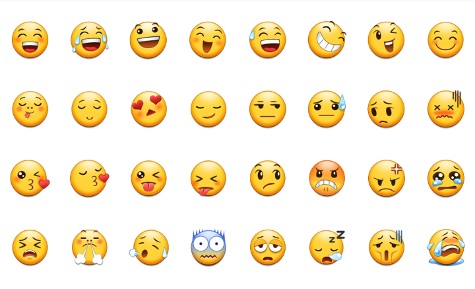Is your firm using emojis in communications?
 Each week I receive roughly 150 marketing emails. The majority get deleted without any consideration of the content, but last week two emails caught my eye and caused me to investigate further. Why? Believe it or not, they stood out from the rest because they used emojis in the subject line.
Each week I receive roughly 150 marketing emails. The majority get deleted without any consideration of the content, but last week two emails caught my eye and caused me to investigate further. Why? Believe it or not, they stood out from the rest because they used emojis in the subject line.
For the uninitiated, emojis are little graphics that are commonly used in text messages but are increasingly moving into other forms of communication. The two that caught my attention were an image of a car to start the subject line of an email about car finance and, similarly, a party image in a service upgrade message from one of my tech providers.
Well, so far, you might think, so boring; but there is a point to all this: according to a recent survey Brits are 63% more likely to open an email with an emoji accompanying the subject line.
Research by email provider Mailjet suggests open rates almost double when the emoji juxtaposes the tone of the subject line to suggest ‘sarcasm’. For example, using a crying emoji to accompany the subject line ‘Do your emails look this good?’, the research claims, caused open rates to surge by as much as 95%.
According to The Atlantic, use of emojis has now become acceptable at work as they have evolved from being seen as something just used by children into a satisfactory way to add a layer of expression – something that’s otherwise difficult in digital communication. In fact, 76% of Americans reported using emojis at work, the article claims.
In that context it makes sense that businesses are experimenting more widely with their use. In a world where many firms survive on single-figure open-rates for their email campaigns, anything, even just a fad, that can encourage improvement in those figures can’t be ignored and should be experimented with; but what about wider use of emojis by business?
In February, Facebook adapted its trademark ‘like’ button by launching its new emoji ‘Reactions’. Users can still ‘like’ a post or comment but now holding down that button on a mobile, or hovering over the icon on a desktop, opens six animated emoji ‘reactions’ as an extension to the ‘like’ principle.
Facebook said the launch of Reactions was to provide users with a more ‘authentic’ way to respond to updates, but it should also help the site boost clicks and enhance engagement across the site – perhaps something every digital publishing outlet should aspires toward.
But the emergence of emojis (if we can call it that) doesn’t mean that widespread use is appropriate. When, in October, USA today attempted to highlight Facebook’s trial of the Reactions service by using a series of emojis against its front page stories, it didn’t go down well. Ad Week called the results ‘rather awkward’ while the Guardian said:
“The general consensus was that the juxtaposition of a crying face emoji next to the headline ‘US hero of French train attack stabbed’ was crass, jarring and borderline offensive.”
If the USA Today episode teaches us anything, it’s that emojis are best used in communications that are more intimate and informal – and, perhaps, even more importantly, they have to be used sparingly and where it’s not considered annoying.
Take as an example of poor use a third marketing email I received last week; it had eight emojis in the subject line. What was the result of that?
Delete immediately, and disregard the content… 😉